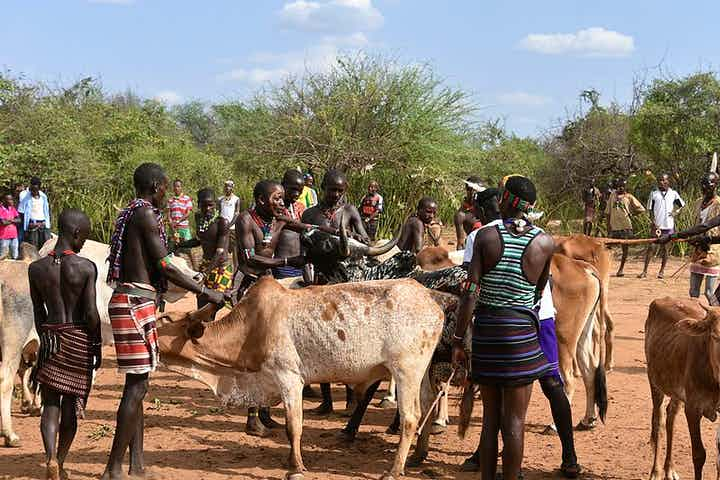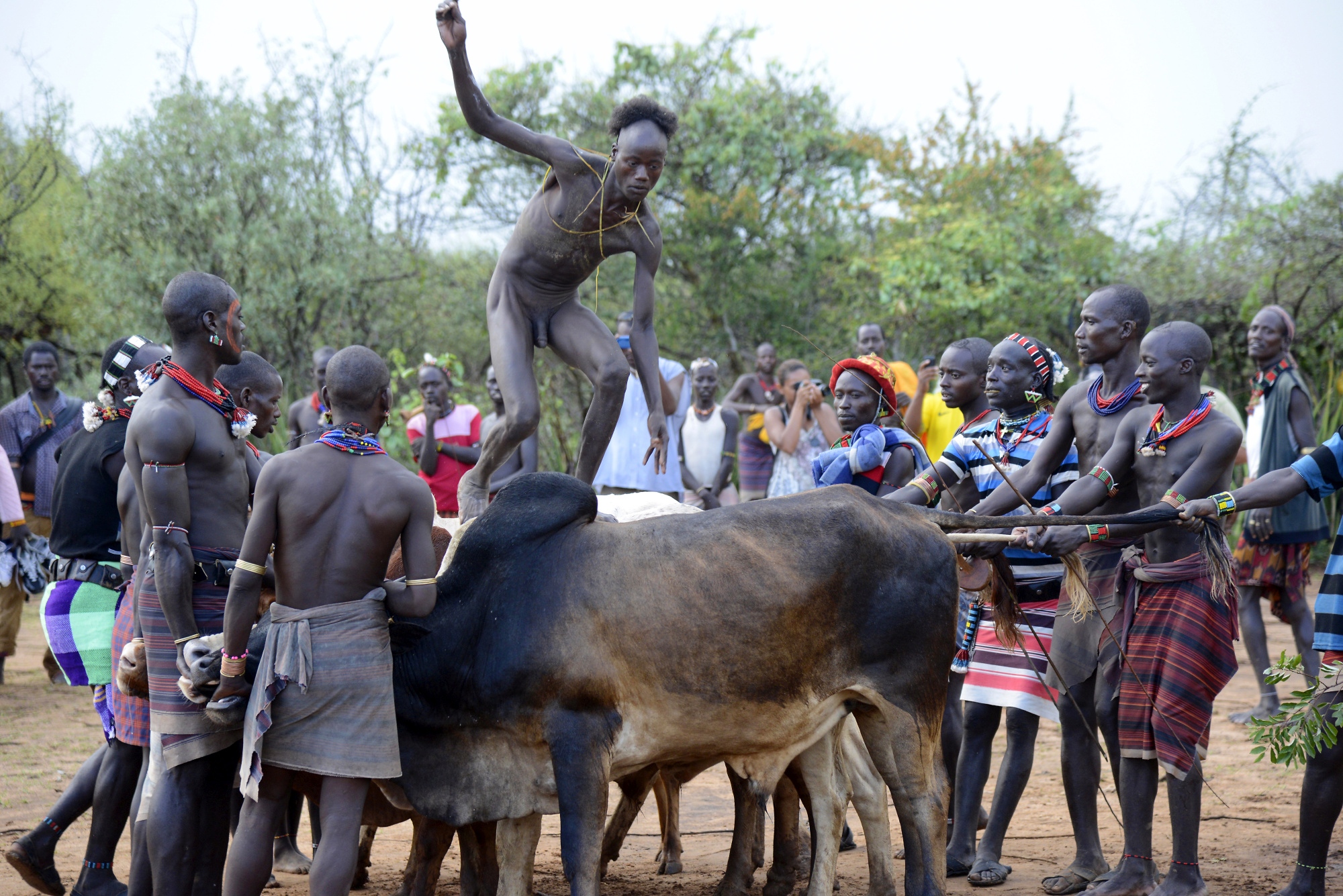The Hamar tribe Bull Jumping Ceremony is an impressive display of courage, skill, and athleticism, the bull jumping ceremony is a centuries-old rite of passage for young men in Hamer tradition. The Hamer are a tribal community living in the Lower Omo Valley of Ethiopia.
The Hamer is one of the most traditional and ancestral villages in Ethiopia. They are an African ethnic group that lives in the south of this country, east of the Omo River, near the border with Kenya. They subsist on agriculture and pastoralism, but they have also added another activity that gives them not only economic wealth but cultural and social wealth: markets.
Markets have become one of the life centers of the Hamer tribe. Everyone meets there to barter or sell native products: vegetables, spices, fabrics, coffees, tobacco, pumpkins, tools, etc. Characteristics of this Ethiopian tribe.
The women of the Hamer tribe wear hair impregnated in ocher mud, with braids usually and hairstyles adorned with feathers. But without a doubt, the most characteristic of their clothing is the large necklaces and stripes made with seashells. And so, ornaments distinguish a married woman from a single woman.

What is Bull Jumping Ceremony in Hamer Tribes?
An impressive display of courage, skill, and athleticism, the bull jumping ceremony is a centuries-old rite of passage for young men in the Hamer tradition. The Hamer are a tribal community living in the Lower Omo Valley of Ethiopia.
On the day of the ceremony, there is plenty of celebrating. Women dance in traditional dress – playing horns with their legs draped in bells – drinking home-brewed sorghum beer. Depending on the social status of the family, somewhere between 100 and 300 people are likely to attend.
What is the cultural reason behind on Bull Jumping ceremony of Hammer tribes?
Before the ceremony, the female relatives (with the exception of little girls) of the young man go to meet the Maza, men who have just passed the bull-jumping ceremony and who temporarily live apart from the rest of the tribe.
They demand to be whipped by these men as a way of showing their dedication and loyalty towards their male relatives. The idea here is to create a strong bond – an obligation – between them.
As they have undergone such pain so stoically on his behalf, he should feel a debt to protect them going into the future. This also signals their attractiveness as a future wife, and it becomes a kind of competition, with women refusing to back down and vowing to each endure the most pain.
Before the ceremony, the young man is rubbed with sand as a purification ritual, is smeared with dung to deliver him strength, and has his head partly shaved and his face painted. He also has strips of tree bark wrapped around his body, as a religious appeal for protection.
Seven to ten castrated bulls are lined up in a row by the men of the tribe and smeared with dung in order to make them slippery. In the midst of an electric atmosphere and a cacophony of bells and horns, the man must leap up onto, and run over, the several-deep row of cattle 4 times without falling.
If he falls, he fails the ceremony and must try again in a year’s time. If the man is blind or disabled in some way, he will be assisted in doing this by other tribe members.
Once a man passes the test, he is blessed and has an animal skin draped over him, to the sounds of rapturous cheering and celebrating by the surrounding crowd. He will then go to join the Maza, who will shave his head completely. Later, there is a big dance celebration which goes on until the early hours: and celebrations continue for several days following the ceremony.
At the dance, the man will have the opportunity to meet a potential wife, although the first marriage (a Hamer man may have up to four wives) is decided by the parents. Once a marriage is arranged, the man’s family must pay a dowry to the woman’s family of 30 goats and 20 cattle. The man will also be allowed to own cattle once he has passed the ceremony, a crucial part of life in this pastoralist community.

